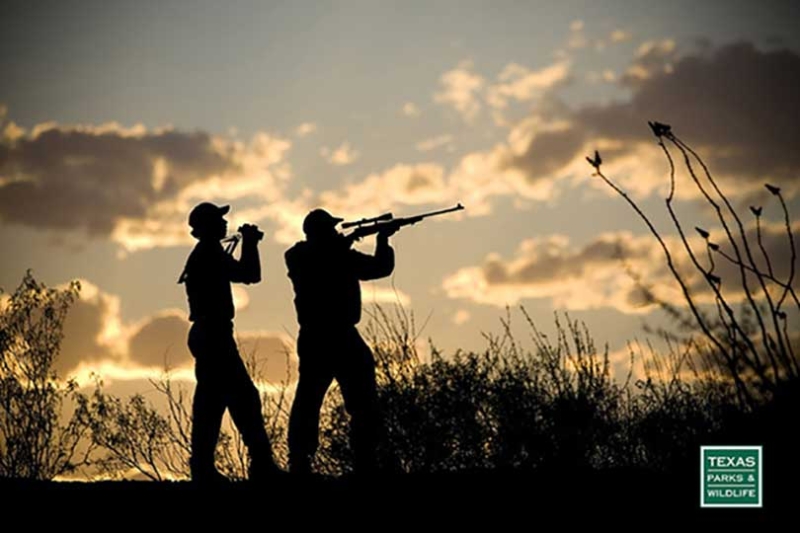By Jessica Domel
Multimedia Reporter
Last year, hunting related accidents in Texas hit an all-time low, and the Texas Parks and Wildlife Department (TPWD) is hoping to continue that downward trend.
One way to do that, according to Steve Hall, TPWD Hunter Education coordinator, is for hunters to ensure they always maintain a safe zone of fire.
“Dove hunters would do well to make sure they communicate with their hunting party and make sure they know where everyone else is located because, typically, they wear camouflage since birds can see color,” Hall said. “Just be mindful of where others are hunting at all times and even other hunters that aren’t necessarily in your group.”
Of the 12 incidents in 2021, three-quarters were caused by hunters swinging on game outside the safe zone of fire.
That issue is common in dove, quail and pheasant hunting. Hunters will see a fast-flying bird, swing their gun and accidentally injure their hunting partner or other people nearby.
Hunters should also be cognizant of nearby livestock, buildings and vehicles.
“You shouldn’t go wrong in terms of maintaining a safe zone of fire,” Hall told the Texas Farm Bureau Radio Network. “It’s when you get so excited to take the shot and you just don’t realize where everybody else is that accidents occur.”
During deer season in Texas, the majority of hunting-related incidents occur in and around vehicles as people are removing or stowing firearms.
“Always carry firearms unloaded in vehicles, separate from the ammunition,” Hall said.
It’s also important that anyone with a firearm—hunter or not—be mindful of where they are pointing a gun.
“If there was one safety rule that everybody should follow to prevent virtually every hunting accident, it’s to keep the muzzle pointed in a safe direction at all times,” Hall said. “If we just followed that one rule, we wouldn’t have very many incidents.”
TPWD encourages gun owners to treat firearms as if they’re loaded at all times. Hunters should also be sure of their target before shooting and keep their finger off the trigger until they’re ready to fire.
Hunters can also improve safety in the field by wearing blaze orange, so they’re easily spotted by others.
“Other things to consider during the hunting season: obviously in Texas, it’s warm at the early part of the season, such as dove season and even the early deer seasons, and hydrating in the field, making sure that you stay cool and getting physically fit (are important),” Hall said. “To go hunting really takes a little bit of fitness. Of course, that’s both mental and physical, and those kinds of things are something that you should be working on now in August, even though it is hot outside. You should be working on where you’re going to go hunting, when you’re going to go hunting and all kinds of things that are involved while you’re hunting, such as the gear and layered clothing if it’s getting colder, all those kinds of things.”
Hunter Education teaches topics like firearm safety, maintaining a safe zone of fire and other actions that improve hunter safety.
The course is required for all hunters in Texas born on or after Sept. 2, 1972, but can also be valuable for those who are not required to take the course.
“The main thing that you want to consider to get ready for the fall hunting season is to take a Hunter Education class. That’s the number one citation issued by the game wardens every year–no Hunter Education,” Hall said.
Hunters who are 17 or older can take Hunter Education online. For those under 17, there is a classroom only course and an internet and field course option.
A one-time, one-year deferral is also available for eligible teens unable to take Hunter Education before hunting.
Hunter Education certification is good for life.
You must carry proof of certification or deferral with you while hunting if you are required to take the course.
The minimum age for certification is nine.
Hunters can register for a Hunter Education course here.

